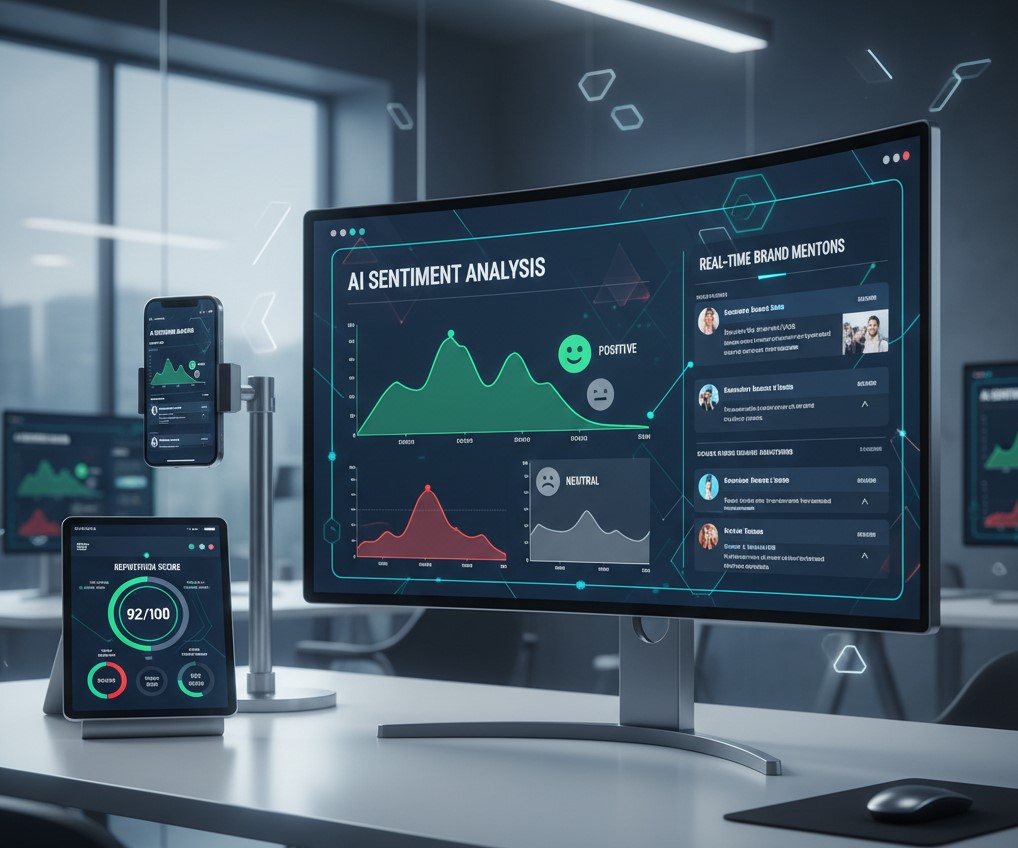In today’s digital landscape, a single negative review or social media post can spread rapidly, undermining brand trust and revenue. Traditional reputation management often relies on manual monitoring and reactive strategies, which can leave gaps and delays. By contrast, integrating artificial intelligence and automation into your online reputation management (ORM) workflow empowers your team to detect issues proactively, respond more swiftly, and maintain a positive brand image around the clock. In this comprehensive guide, we’ll explore what AI-powered ORM entails, how it benefits your business, essential tools to consider, and step-by-step best practices to implement an effective, automated monitoring strategy.
Understanding AI-Driven Online Reputation Management
AI-driven ORM leverages machine learning algorithms, natural language processing (NLP), and predictive analytics to continuously scan online channels—social media platforms, review sites, forums, blogs, and news outlets—for brand mentions, sentiment shifts, and emerging crises. Instead of manually checking dozens of websites and dashboards, AI agents analyze text and visual content at scale, classify sentiment (positive, negative, neutral), and flag critical issues based on custom thresholds. Automated alerts ensure your team is notified the instant a spike in negative sentiment appears or a potential crisis begins to surface.
Moreover, advanced AI systems can predict reputation risks by correlating historical patterns, competitor activity, and industry trends. Predictive modeling helps you allocate resources strategically, address vulnerabilities before they escalate, and measure the true impact of your reputation management efforts over time.
Key Benefits of Proactive ORM Automation
- 24/7 Monitoring and Instant Alerts: AI bots work nonstop to scan millions of online sources, ensuring no mention goes unnoticed. Instant notifications mean you can address issues before they spiral out of control.
- Scalability and Efficiency: Automated workflows handle high volumes of data effortlessly, reducing manual labor and enabling your team to focus on strategic responses rather than data collection.
- Consistent Response Quality: NLP-driven templates and chatbots can craft personalized responses to common queries or complaints, maintaining your brand voice and ensuring timely engagement.
- Predictive Insights: Machine learning models forecast reputation risks based on past incidents, competitor benchmarking, and social listening trends, allowing for preemptive action.
- Comprehensive Analytics: AI-powered dashboards consolidate sentiment scores, share-of-voice metrics, and engagement KPIs, giving you a unified view of your brand reputation across channels.
Essential AI Tools for ORM

When selecting AI and automation solutions for ORM, look for platforms with robust NLP capabilities, customizable alert rules, and seamless integrations with your existing tech stack. Here are some leading options:
- Brand24: Real-time social listening with automated sentiment analysis and shareable reports.
- Mention: Monitors news, blogs, forums, and social media with team collaboration features and AI-driven prioritization.
- Awario: Provides Boolean search queries, AI-powered sentiment tracking, and white-label reporting for agencies.
- Talkwalker: Advanced image recognition to track logo mentions, contextual sentiment scoring, and crisis detection models.
- Sprinklr: Enterprise-grade social media management with AI-driven content classification and escalation workflows.
These platforms streamline data collection and analysis, but true automation comes from integrating them with workflow tools (e.g., Zapier, Microsoft Power Automate) to trigger internal notifications, update ticketing systems, or even deploy chatbots for initial customer outreach.
Steps to Implement AI-Powered Reputation Monitoring
- Define Objectives and KPIs: Clarify what you want to achieve—reducing negative mentions by X%, improving average response time to under Y minutes, boosting overall sentiment score, or increasing positive review volume. Establish measurable metrics to track ROI.
- Audit Current Channels: Compile a list of all online touchpoints where your brand appears: social networks, review sites, discussion forums, blogs, video platforms, and news outlets. Ensure your AI solution can ingest data from each source via API or RSS feeds.
- Configure Keyword and Sentiment Rules: Use Boolean logic to define brand mentions (including common misspellings), product names, competitor references, and industry terms. Set sentiment thresholds that trigger alerts for negative spikes or emerging crisis indicators.
- Automate Alert Workflows: Integrate your AI monitoring tool with communication platforms (Slack, Microsoft Teams) and ticketing systems (Zendesk, Jira). Automate alert distribution to the right team members, complete with context and priority levels.
- Deploy Response Automation: Configure chatbots or templated responses for common issues. For high-priority alerts, set up escalation paths to senior PR or customer service teams to ensure personalized handling.
- Train Your Models: Regularly review false positives and negatives, then retrain your AI models. Fine-tuning sentiment analysis and keyword detection ensures accuracy as your brand and industry vocabulary evolve.
- Monitor, Analyze, and Iterate: Schedule weekly and monthly reports that showcase trends, ROI metrics (cost savings, issue resolution times), and campaign successes. Use these insights to refine alert thresholds, expand keyword lists, and optimize response playbooks.
Measuring Success and ROI
Quantifying the impact of AI-driven ORM requires a mix of quantitative and qualitative metrics. Track average response times, volume of negative vs. positive mentions, sentiment score improvements, and resolution rates. Calculate cost savings from reduced manual monitoring hours and measure revenue uplift from higher customer trust and retention. Incorporate stakeholder feedback and post-mortem analyses of any crises to assess how AI tools accelerated containment and recovery.
Case Study: Proactive ORM in Action
A mid-sized e-commerce retailer integrated an AI monitoring platform with its customer support system. Within 24 hours of deployment, the tool detected a sudden surge of negative comments related to a delayed product launch. Automated alerts were routed to the PR and logistics teams, who issued an official apology on social media and offered expedited shipping to affected customers. By resolving the issue within three hours, the retailer avoided widespread backlash, retained customer loyalty, and increased positive mentions by 15% over the next week.
Best Practices for AI-Driven ORM

- Maintain Human Oversight: Always have a human review high-impact alerts and AI-generated responses to ensure empathy, accuracy, and brand consistency.
- Continuously Train Your Models: Feed your AI with new data—product launches, keyword updates, emerging slang—to keep sentiment analysis accurate and relevant.
- Integrate Cross-Functional Teams: Connect marketing, PR, customer service, and legal teams via shared dashboards and automated workflows for seamless collaboration during crises.
- Prioritize Transparency: When responding to complaints or correcting misinformation, be transparent about your actions and timelines. Public trust grows when audiences see genuine accountability.
- Review and Refine Regularly: Conduct quarterly audits of your ORM strategy, evaluate tool performance, and adjust KPIs based on evolving business goals and market conditions.
Conclusion
AI and automation are transforming online reputation management from a reactive chore into a proactive strategic asset. By leveraging machine learning, sentiment analysis, and real-time alerting, businesses can protect their brand image, engage customers faster, and derive actionable insights that drive long-term growth. Implementing an AI-powered ORM strategy requires clear objectives, the right toolset, human oversight, and a commitment to continuous improvement. Embrace this approach today to stay ahead of reputation risks, foster customer trust, and secure a competitive edge in the digital age.
Learn more about: Online Reputation Management for Doctors & Healthcare Professionals





